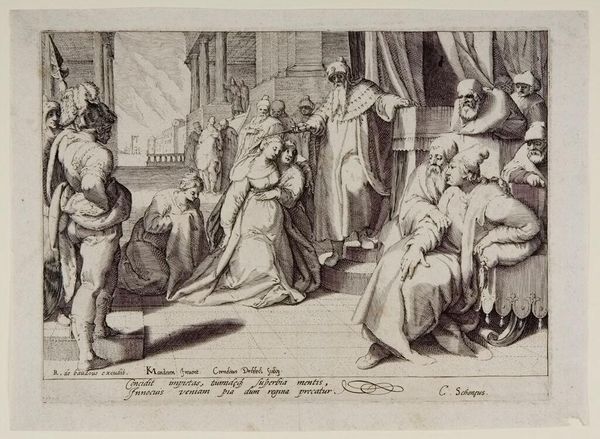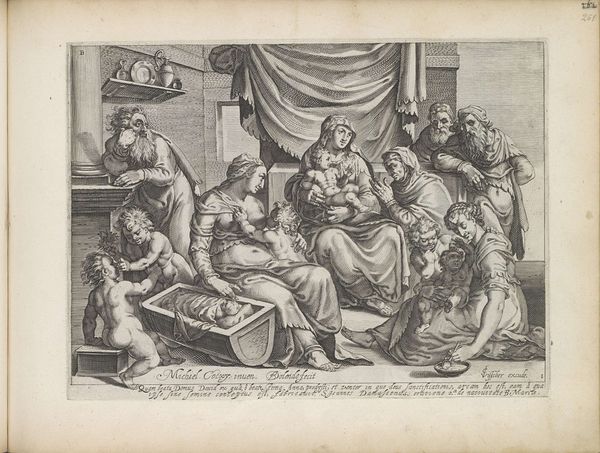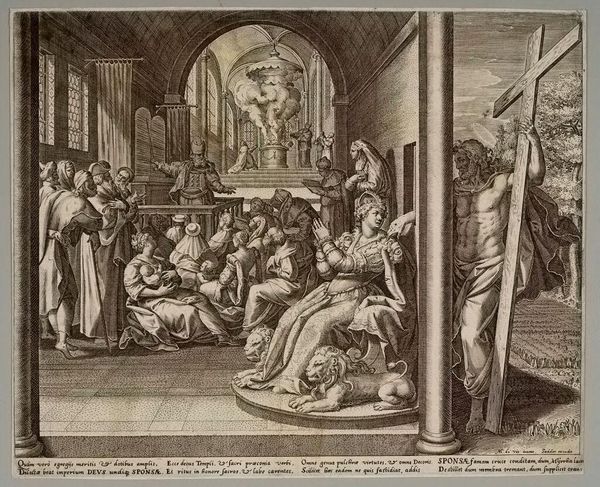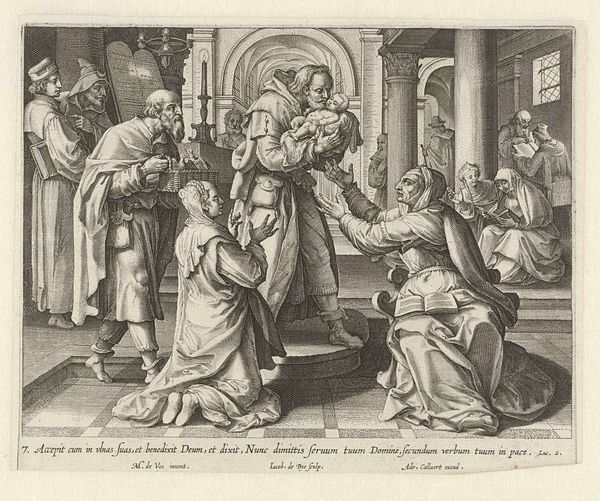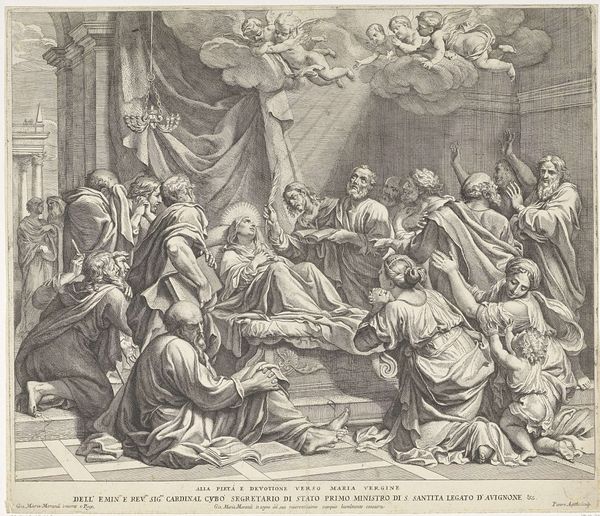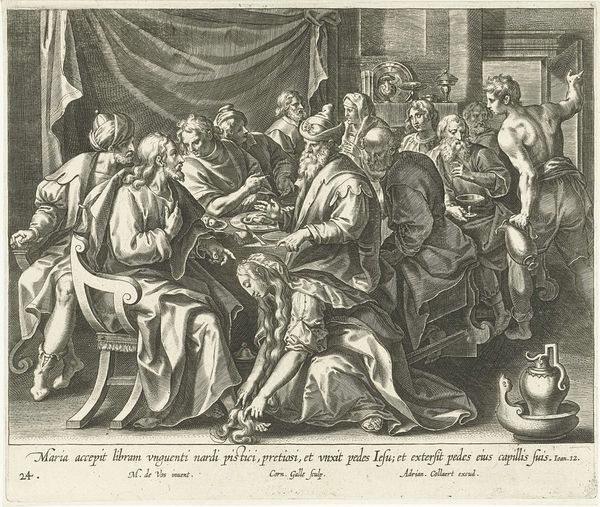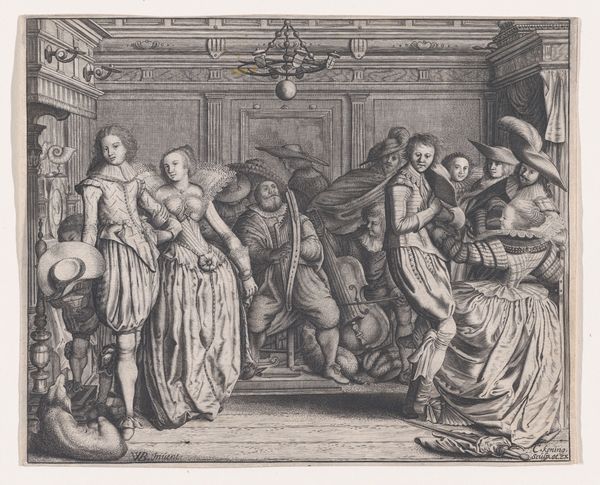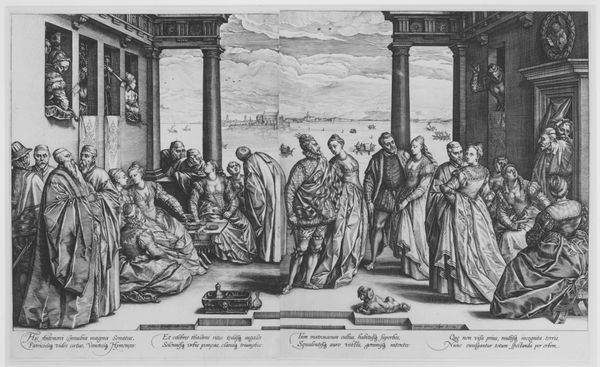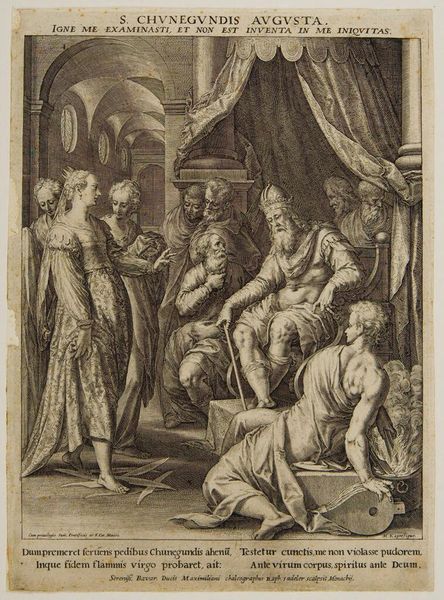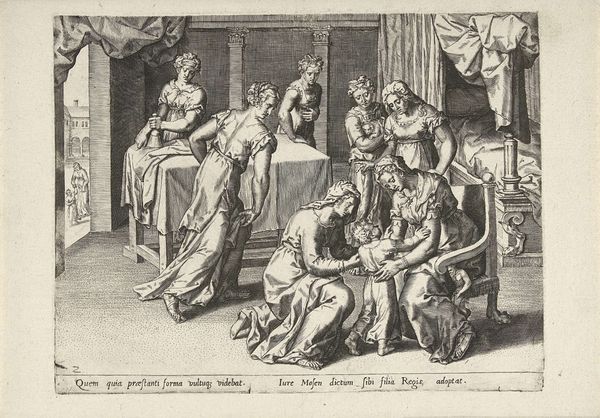
drawing, print, engraving
#
drawing
# print
#
mannerism
#
figuration
#
history-painting
#
engraving
Dimensions: Sheet (cut to platemark): 8 3/16 × 9 13/16 in. (20.8 × 24.9 cm) Image: 7 9/16 × 9 3/4 in. (19.2 × 24.7 cm)
Copyright: Public Domain
Curator: Immediately, the geometric rigidity contrasted against the domestic scene, renders an air of formality I did not expect. What is your take? Editor: I agree it's striking. What strikes me most are the expressions, there is such solemnity; it's not your average scene of domestic tranquility. Curator: Precisely, this engraving, "Lucretia and Her Women Spinning," dates from around 1578-1579 and comes to us from the hand of Hendrick Goltzius. Today, it resides at the Metropolitan Museum of Art. Editor: And, of course, Lucretia's story is anything but tranquil. She's the Roman noblewoman whose rape by Sextus Tarquinius led to the overthrow of the Roman monarchy. Knowing that, you look at this ostensibly simple domestic scene through an entirely different lens. Curator: Indeed. Goltzius places Lucretia centrally, calmly overseeing her women at their spinning. What I find compelling is the tension between this industrious scene and the looming tragedy, her ultimate suicide to avenge her honor. What's the broader narrative Goltzius crafts through this juxtaposition? Editor: It's definitely about more than just female virtue and industry. Lucretia becomes a symbol of resistance against tyranny. By depicting her in this domestic setting, Goltzius emphasizes what is being violated – the sanctity of the home, the safety of women, the established order. Curator: I also observe the curious procession of men at the portico, do you think that their composition infers their impending doom? Editor: I agree that's an insightful reading! To me, their looming presence juxtaposes the quiet strength of Lucretia. Also the architecture and interior decoration emphasize her social class. This isn't just about any woman; it's about the elite and their role in societal change. It also adds another dimension when viewed through lens of aristocracy within Goltzius' time. Curator: Agreed, Hendrick was incredibly skilled in printmaking. This piece illustrates the virtue and valor residing amongst women in a dynamic, changing, public society. Editor: Yes, there's a richness here that continues to resonate even now. The tragedy of Lucretia, coupled with the intricate detail of this print, creates a narrative that demands a closer look at power, gender, and resistance throughout history.
Comments
No comments
Be the first to comment and join the conversation on the ultimate creative platform.
